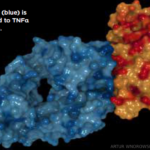 On July 31, the U.S Food & Drug Administration (FDA) announced that it will require safety label changes to all opioid pain medications to better emphasize and explain the risks associated with their long-term use.1
On July 31, the U.S Food & Drug Administration (FDA) announced that it will require safety label changes to all opioid pain medications to better emphasize and explain the risks associated with their long-term use.1
This change follows an FDA Public Advisory Committee meeting held on May 5. During the meeting, participants discussed data from two, large, post-marketing, observational studies: PMR 3033-1 and 3033-2. These two studies provided new data on serious long-term opioid side effects.2
After the review of these studies, public comments, medical research and recognizing the absence of adequate and well-controlled studies on the effectiveness of opioids in the long term, the FDA decided to again update labels to help healthcare professionals and patients make better treatment decisions. Part of this discussion noted that when long-acting oxycodone (OxyContin) was initially approved by the FDA, no long-term studies existed on its treatment of pain in many of the patient populations for which it would have been—and was—prescribed. This factor led to tragic outcomes and fueled the opioid crisis.3
The mandated label changes include:
- Clearer risk information: A summary of study results showing the estimated risks of addiction, misuse and overdose during long-term use;
- Dosing warnings: Stronger warnings that higher doses come with greater risks that may remain throughout continued use;
- Clarified use limits: Removing language that could be misinterpreted to support using opioid pain medications indefinitely (i.e., over a long duration);
- Treatment guidance: Labels will reinforce that the use of long-acting or extended-release opioids should only be considered when other treatments—including shorter-acting opioids—are not adequate;
- Safe discontinuation: A reminder that opioids should not be suddenly stopped in patients who may be physically dependent because it can cause serious harm;
- Overdose reversal agents: Additional information on medications that can be used to reverse an opioid overdose;
- Drug interactions: Enhanced warnings about combining opioids with other drugs that slow the nervous system, including gabapentinoids and benzodiazepines;
- More risks with overdose: New information about toxic leukoencephalopathy, which may occur after an overdose; and
- Digestive health: Updates about opioid-related problems with the esophagus.1
The relevant opioid manufacturers have been notified and have 30 days to submit their label updates to the FDA for review.
Michele B. Kaufman, PharmD, BCGP, is a freelance medical writer based in New York City and a pharmacist at New York Presbyterian Lower Manhattan Hospital.
References
- FDA requires major changes to opioid pain medication labeling to emphasize risks [news release]. U.S. Food & Drug Administration. 2025 Jul 31.
- Updated meeting date and public participation information: May 5, 2025, joint meeting of the Drug Safety and Risk Management Advisory Committee and the Anesthetic and Analgesic Drug Products Advisory Committee Meeting announcement. U.S. Food & Drug Administration. 10 Jul 2025.
- Jones GH, Bruera E, Abdi S, et al. The opioid epidemic in the United States—overview, origins and potential solutions. Cancer. 2018 Nov 18;124(22):4265–4419.



